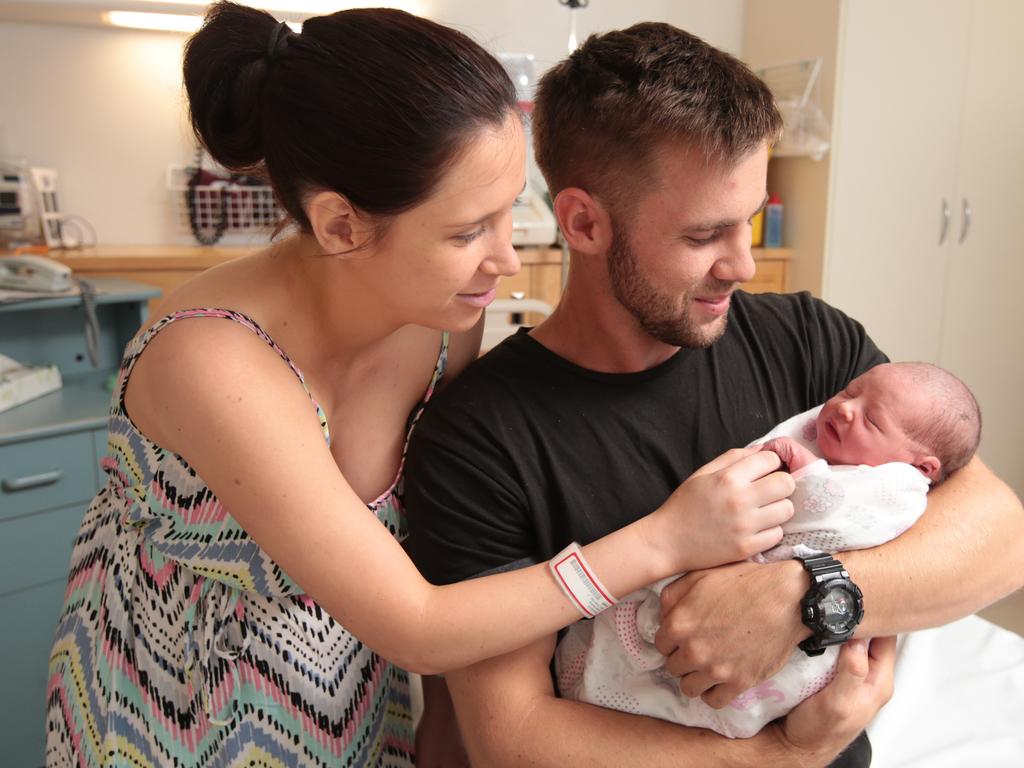Private hospitals, insurers want freedom to negotiate price of implants
It’s time to ‘ditch the sprawling spreadsheets of bureaucratic price controls’ that leave the private sector paying too much.

Australian patients are suffering from the “blatant exploitation” of the private hospital system by multinational medical manufacturers, the head of a peak health insurance body says.
Matthew Koce, chief executive of the Members Health Fund Alliance, said a federal government system that set the prices of more than 10,000 individual implants, such as pacemakers and hip implants, was costing the private sector up to $1bn a year.
He is calling for a national purchasing authority for all implants used in public and private hospitals to replace the system in which the federal health department sets prices for implants used on private patients but allows the public system to tender for products at competitive prices.
In data released today, the alliance reveals that a cardiac defibrillator can cost $25,630 more for private patients; a spinal fusion can cost $18,065 more; a pacemaker $7111 more; and a hip implant $2600 more.
The massive price differences, which Mr Koce said could amount to a 65 per cent mark-up, have been an ongoing concern for the private health funds which, by law, must cover all the devices on the “prescribed list” and cannot negotiate with hospitals or manufacturers for a price cut.
Mr Koce said the regulatory system, which dates back to 1985, had failed consumers.
“Inflated prices suggests the brazen exploitation by big overseas-dominated conglomerates out to fatten their bottom line at the expense of patients,” he said.
The alliance, which represents not-for-profit funds with about 5.4 million members, and the bigger peak body, Private Healthcare Australia, with about 15 million members, argue that the price gap must be addressed at a time of financial crisis in the private health sector.
PHA chief executive Rachel David said the existing generic items on the prescribed list should be repriced.
“If you’re going to have a list, it needs to be repriced at the level of the public sector,” Dr David said.

She said the government, which was considering setting a “national efficient price” for private hospitals, should include prostheses within that price, and thus encourage private hospitals to contain costs.
“The biggest cost is for the hospital stay, followed by the cost of the implant, followed by the cost of the doctor,” Dr David said. “We actually pay more for the implants than we do for the doctor at the moment – which is ridiculous.”
She said that as well as the public-private gap, Australians were paying 30 to 100 per cent more for implants and devices compared to patients in many other countries, because the pricing system had led to “regulatory capture” by multinational manufacturers who saw Australia as a “profit centre”.
The price gap dates back to 1985, when the federal government introduced a “Prostheses List” specifying which devices must be covered by the insurers. It means that while the public sector pays competitive prices, private hospitals are stuck with the prices set by regulators.

Since the funds began complaining in 2006, there have been efforts to reduce the gap but a deal between the then health minister, Greg Hunt, and the Medical Technology Association of Australia in March 2022, embedded a gap of at least 7 per cent.
Mr Hunt signed a memorandum of understanding to reduce the private prices by 40 per cent from July 1, 2022; a further 20 per cent from July 1, 2023; and another 20 per cent from July 1, 2024. But it only applies where the gap between the public and private prices is more than 7 per cent. There will be no reduction to the private prices in 2025, ahead of the expiration of the agreement on June 30 next year.
Mr Koce conceded that prices may have fallen since the 2022-23 figures – the latest available – that he used for comparing public and private prices, but said he was “looking forward to next year’s stats”. “We need to receive data more frequently,” he said. “They are saying that prices have gone down – well, show us.”
Peter Breadon, health program director at the Grattan Institute, told The Australian the deal struck in 2022 between Mr Hunt and the MTAA was not delivering.
“It might look like the deal brings inflated costs into line with public hospital prices, but it doesn’t,” Dr Breadon said.


“The sequential cuts – 40 per cent, then 20 per cent, then another 20 per cent – reduced the gap by around 60 per cent over several years. But even that overstates the impact, because a mandatory premium of 7 per cent above public prices was locked in for all listed devices.
“The price reductions are real, and they’re long overdue. But there’s no good policy reason for the government to fix prices for thousands of individual items, or to mandate that private hospitals must pay more than the public system.
“A better approach is to remove these price controls entirely and let private hospitals negotiate prices in the market.”
Dr Breadon argued that this should be part of a broader rethink about how private hospitals were funded.
“Right now, private hospitals say they’re underpaid by insurers, while insurers say they’re overpaying,” he said.
“Contracts are being torn up, and patients face growing uncertainty as some hospitals scale back or shut down services. Instead, insurer payments should be tied to the total cost of delivering care across the private sector – including the costs of doctors, nurses, medicines and prostheses.
“That would make sure the sector remains viable, end the hospital-insurer blame game, and give providers stronger incentives to deliver care efficiently.
“It works in the public sector, and it’s a far better approach than micromanaging the price of individual bolts, screws, stents and surgical implants.
“We should ditch the sprawling spreadsheets of bureaucratic price controls – and with them, the toxic debate about who pays what – and instead focus on getting better value for patients.”
PHA’s Dr David said the assessment committee which set prices, had in recent years adopted a strict approach to any price increase for variations of devices “unless there’s a real benefit to the patient”.
“Before the reform process, basically, it was like Apple relaunching iPhones every year,” she said. “They would just ratchet the price up regardless of the outcome for the patient. But these days, they’re very strict.”





To join the conversation, please log in. Don't have an account? Register
Join the conversation, you are commenting as Logout